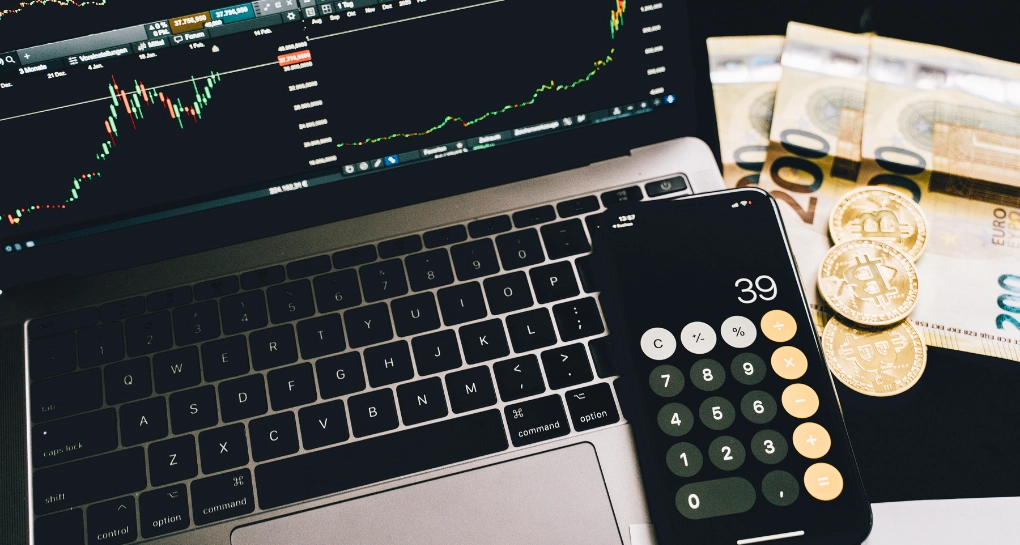When people first start trading forex, one of the first terms they come across is pip. It’s a small word, but it plays a big role in how traders measure price changes, profits, and losses.
Whether you’re just starting out or already active in the markets, understanding pips and how to calculate their value is essential to making informed trading decisions.
What Are Pips in Forex Trading, and What Is Their Value?
A pip is the basic unit used to measure price movement in currency pairs. Think of it as the “tick” or “step” that a currency pair takes as its price goes up or down.
By tracking pips, traders can measure risk, calculate profit and loss, and manage their positions more effectively.
What Is a Pip?
A pip (short for “percentage in point”) represents the smallest price movement most currency pairs can make. For most pairs, one pip is equal to 0.0001.
So if EUR/USD moves from 1.1000 to 1.1001, that’s a change of one pip.
Understanding Pips
Pips help standardize how traders talk about price movements. Instead of saying “EUR/USD rose by 0.0001,” traders simply say, “It moved up one pip.”
This makes communication clearer and faster, especially in fast-moving markets.
Calculating Pip Value
Knowing what a pip is isn’t enough; you also need to know what it’s worth in terms of money. Pip value depends on:
- The size of your trade (lot size)
- The currency pair you’re trading
- Your account’s base currency
For example, in a standard lot (100,000 units), one pip in EUR/USD is usually worth $10. But that value changes if you’re trading mini lots (10,000 units) or micro lots (1,000 units).
JPY Exception
Pairs involving the Japanese Yen are a little different. Instead of four decimal places, they’re quoted to two. For example, USD/JPY moving from 110.00 to 110.01 is one pip.
Pips and Profitability
Every profit or loss in forex comes down to how many pips the market moved and how much each pip is worth for your position size. That’s why traders pay close attention to pip values before entering a trade.
Real-World Examples of Pip
- EUR/USD: If the pair goes from 1.1050 to 1.1060, that’s a 10-pip increase.
- GBP/USD: A move from 1.2500 to 1.2485 is a 15-pip drop.
- USD/JPY: A change from 140.25 to 140.55 is a 30-pip move.
What Is the Difference Between a Pip and a Pipette?
A pipette is one-tenth of a pip. Some brokers use five decimal places instead of four, showing price moves in pipettes for greater precision. For example, EUR/USD moving from 1.10005 to 1.10015 is one pip, but 10 pipettes.
How Are Pips Used?
Pips are used to:
- Measure price changes
- Calculate spreads (the difference between bid and ask)
- Work out profits and losses
- Compare volatility across pairs
How to Calculate the Value of a Pip
The general formula is:
Pip Value = (One Pip / Exchange Rate) × Lot Size
For example, trading one standard lot (100,000 units) of EUR/USD:
Pip Value = (0.0001 / 1.1000) × 100,000 = $9.09 per pip
How to Find the Pip Value in Your Trading Account’s Currency
If your account isn’t in USD, you’ll need to convert the pip value into your base currency. Many brokers have built-in calculators for this, but understanding the math helps you stay in control.
Applying Pip Values to Trading Strategy
- Risk management: Decide how many pips you’re willing to risk before placing a stop-loss.
- Position sizing: Adjust lot size to ensure pip movements align with your risk tolerance.
- Profit targets: Use pip values to set realistic take-profit levels.
Factors Influencing Pip Values
- Lot size: Larger trades increase pip value.
- Currency pair: Some pairs naturally have higher pip values.
- Exchange rate: Fluctuations in rates affect pip worth in different account currencies.
Impact of Economic Events on Pip Values
When big economic news hits, like central bank decisions or jobs data, currency pairs can swing by dozens or even hundreds of pips in minutes. That volatility can multiply gains but also risks.
FAQs
Does the Japanese Yen Forex Rate Use Pips?
Yes. JPY pairs are quoted with two decimal places, so one pip is a 0.01 change.
What Is the Spread in Forex?
The spread is the difference between the buying (bid) and selling (ask) price of a currency pair. It’s usually measured in pips and represents a trading cost.
Conclusion
Pips may seem like a small detail at first, but they are the foundation of forex trading. Every profit, loss, and strategy you apply is measured in pips. By understanding how to calculate pip value, account for exceptions like JPY pairs, and apply this knowledge to your risk management, you gain more control over your trades. Whether you’re just starting out or already experienced in the markets, mastering pip calculations helps you make smarter, more confident trading decisions.
Start Trading Smarter with FXPrimus
If you’re ready to put this knowledge into practice, FXPrimus offers a secure, regulated trading environment with competitive spreads and powerful trading platforms. Open a live account or practice on a demo to see how pip values work in real market conditions.
